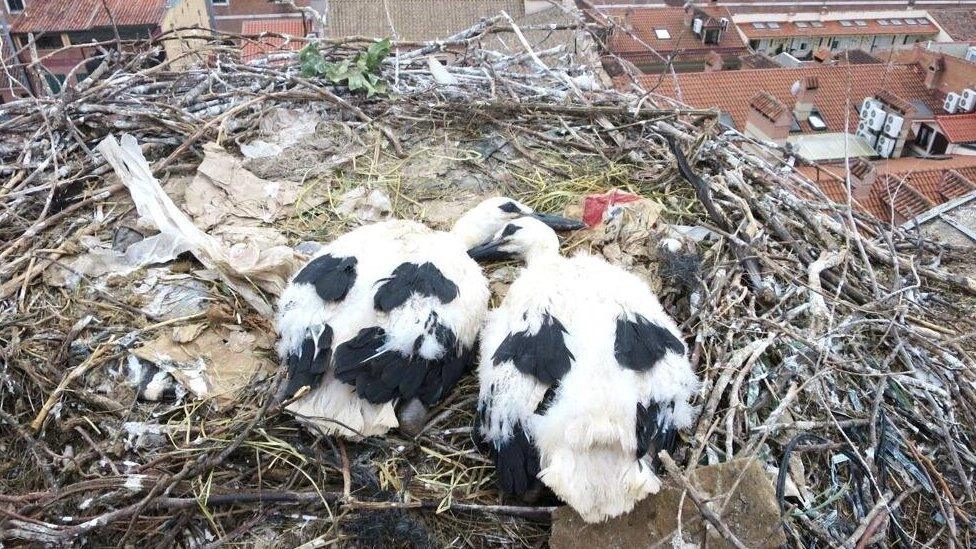Plastic pollution: Scientists are worried about chicks growing up in nests made of rubbish
- Published
- comments

These sleepy White stork chicks live in a nest made of rubbish
Birds have been using rubbish we throw away to make their nests, and scientists are worried about the effect this will have on chicks.
A team of researchers from Europe looked at more than 35,000 wild bird nests as part of a new study, and found that 176 bird species have been building their nests with human litter, including things like plastic bags and cigarette butts.
The research showed that birds all over the world do this, as they found litter in nests on every continent except Antarctica.
"This is worrying because it is becoming increasingly apparent that such materials can harm nestlings and even adult birds," said Zuzanna Jagie艂艂o, an ornithologist - a scientist who studies birds - at the Poznan University of Life Science in Poland, and the lead author of the study.
Pigeons nesting on a building site in Sussex make use of discarded cable ties
The scientists discovered that different birds around the world would use different materials in their nests, for example, seabirds in Australia use fishing nets, birds living in cities in South America add cigarette butts to their nests, white storks add cardboard, foil and plastic string, and blackbirds in Europe add plastic bags to their nests.
Although birds have been adding human litter to their nests as far back as the 1830s, the team of researchers said it has "undoubtedly" increased in recent years.
"We are living together with birds in a very human-altered environment," said Jagie艂艂o. "Pollution is everywhere."
Adding human-made litter to nests can be bad for chicks for many reasons the scientists say, as the baby chicks can get tangled up in string or nets, bright coloured rubbish can attract predators to the nests, some rubbish can release toxins which can make the chicks sick, and the birds can mistake the rubbish for food which can make them poorly if swallowed or choke them.
However, the scientists were surprised to discover that some litter was helpful to the birds.
Cigarette butts contain a chemical called nicotine which can repel some parasites that would usually hurt the chicks.
They also found that some types of litter, like plastic helped to keep nests drier and warmer.
The scientists say that more research is needed to learn more about how pollution is affecting wildlife, and want to encourage people to take pictures of birds nest where they live.
- Published13 November 2022
